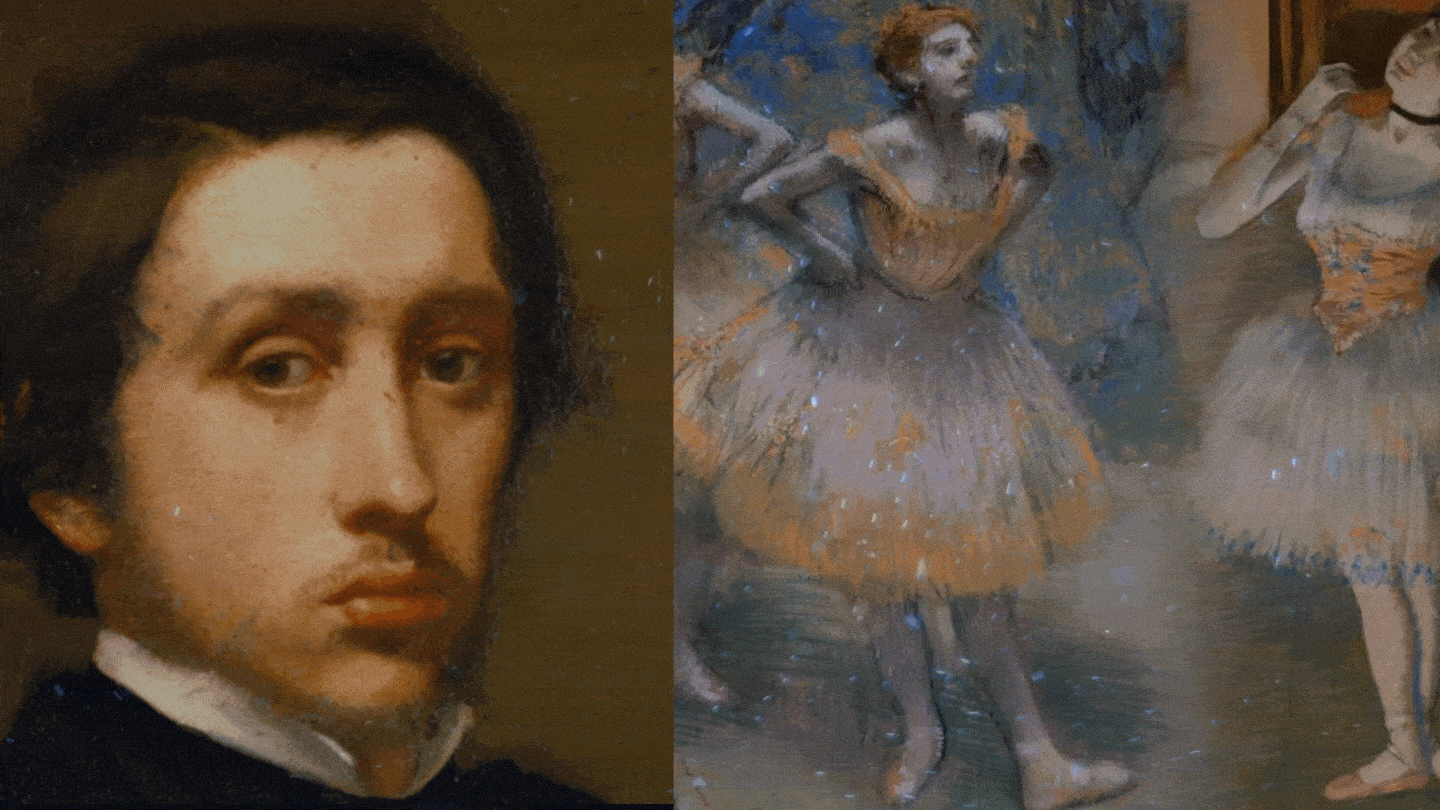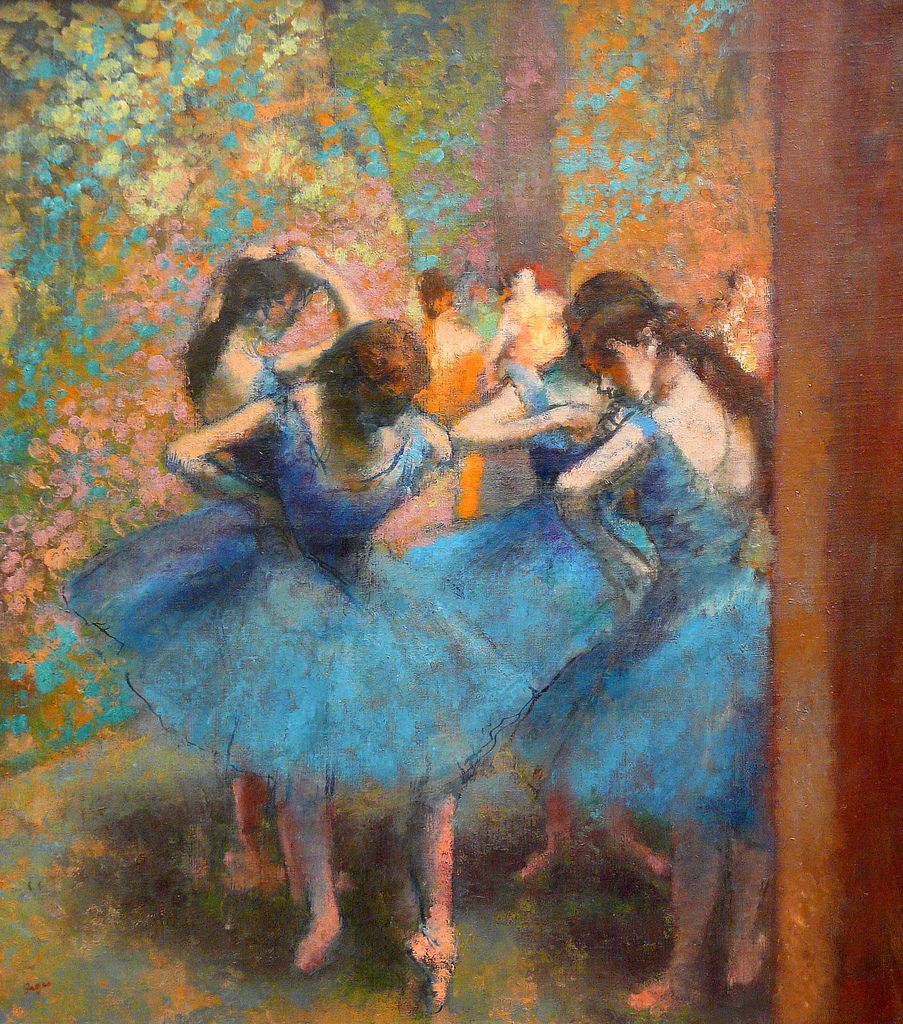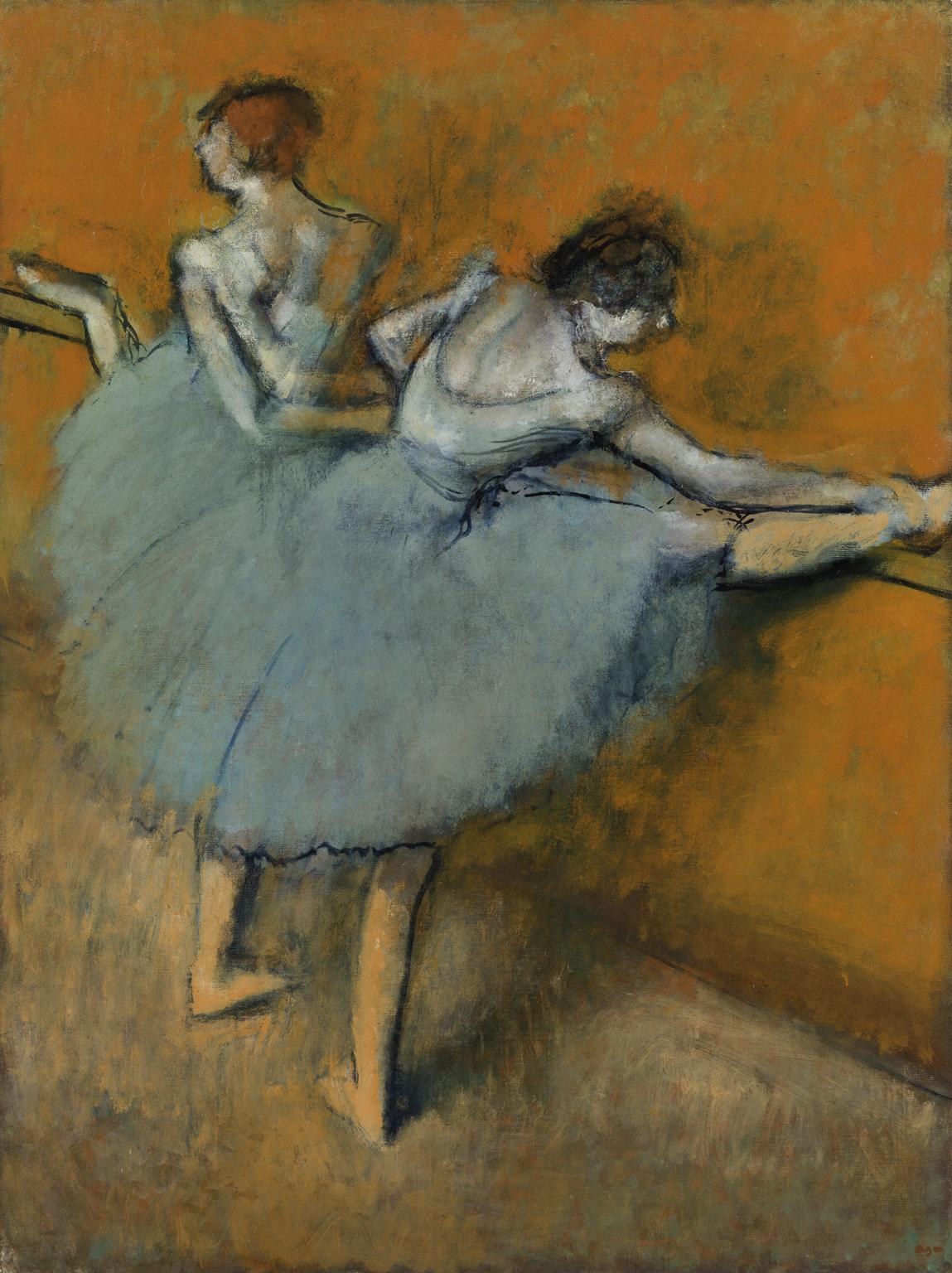
Edgar Degas was a French artist known for his paintings of ballet dancers and other scenes from everyday life. He was born in 1834 into a wealthy family, but his father died when he was only 13. Degas studied art at the Ecole des Beaux-Arts in Paris, but he was not a successful student. However, he continued to paint and develop his own unique style.
Degas first gained public attention for his paintings of the French opera house, the Opera. He continued to paint scenes of everyday life, often featuring women and children. He also became known for his pastel drawings. In his later years, Degas suffered from failing eyesight and died in 1917.
Critics have praised Degas for his ability to capture the beauty and grace of his subjects, as well as the everyday details of their lives. His work has been described as both poetic and realistic.
Degas said, “Painting is easy when you don’t know how, but very difficult when you do.”



Love Degas?
What does Degas’ art inspire when you see it? What’s your favorite Degas work? Was Degas right when he said “painting is easy when you don’t know how, but very difficult when you do”?
I’m first drawn to his use of saturated colors. I love his mastery of placing one amazing color next to another amazing color and yet achieving perfect harmony. Then, Degas’ subject matter intrigues me. What’s the story? What’s happening between the characters or in the mind of the person portrayed? Finally, his fabulous drawing skills leave me intensely satisfied. There’s never a doubtful line. Hands are hands, the anatomy of man and girl and horse are all drawn with equal skill, capturing not just that one moment in time, but every related scene in timeless understanding of human nature.
Degas is an artists who elevated even the common place and “common man and woman” to something that is extraordinary. His work is an example of the subject matter not being important but the way it is portrayed is the draw. I have a book of his monotypes (paintings done on a plate and then transferred to paper) and many were done in brothels, even his ballerinas were working girls and not the star performers. He elevated them with his extraordinary compositions and technique.
I think it is important to keep in mind that Degas only had one year of formal training. He largely developed his skill and knowledge of painting by visiting museums and looking at the work of those he admired up close. He was brilliant at composition, and was able to approach art with a fresh eye and mind, because he was not locked into what others deemed correct or incorrect when it came to art. He is often-times taken lightly because of his choice of subject matter; however If you look closely at his work and really study it, you will come to understand the brilliance of his talent. He loved the theatre, and loved being theatrical in his painting at times. An unusual work of his is “The Sewing Basket”.
“The Sewing Basket” was renamed at one point and is most often referred to as “Interior”
I’ve always loved the softness of so many of Degas’ paintings. It’s also interesting that his compositions often include groups of people who aren’t relating to each other; the ballet dancer pieces are examples of this. He draws you in to focus on each figure, as though you were walking among them. I was fortunate to see a fabulous exhibit of Degas’ work at the Clark Art Institute, “Picasso Looks at Degas”. The exhibit was one of the catalysts that led me back to my own art journey. While it would be impossible for me to choose a favorite piece of his, ‘A Cotton Office in New Orleans” is one that fascinates me. It isn’t as lovely a subject as the ballet paintings but I’m fascinated by how he captured each figure. I get drawn in & can’t seem to stop looking. A bit of trivia: his uncle and two brothers are depicted in the painting. As far as Degas’ quote, “Painting is easy when you don’t know how, but very difficult when you do.”, I couldn’t agree more. As novices at anything, we don’t always realize just how much there is to learn. In art, we’re always striving to improve, trying new things, evolving. And there really isn’t any one right way. Every time we discover something new, it presents an added level of difficulty. But it also opens up a new vista of things to learn, to try, to embrace! It never ends & isn’t that wonderful?
Sublime ballerinas and gentle everyday life…..Degas was a horrible man and virulent anti semite
I had the pleasure of seeing the Degas exhibition when I worked at the National Gallery of Canada. It was the first major exhibition there following the opening of the new building in 1988. And what an exhibition it was…with so many beautiful works. I have to say, one of my favourite pieces was The Absinthe Drinker. I love his style.
And I would tend to agree that (for me anyway) it’s easier to paint when you don’t feel the constraints of formal training, which would infer that “you must do this, or it must be that way. “ to be right.
There was so much that was jaw-droppingly achingly beautiful at a Degas show that they had in Ottawa, Canada … however… upon entering the room where they featured his ‘Little Dancer’ made me weep.
Yes yes ..there are many copies and stories behind the stories…doesn’t change the impact.
Degas once said:
“It is all very well to copy what you see; it is much better to draw what you only see in memory. There is a transformation during which the imagination works in conjunction with the memory. You only put down what made an impression on you; that is to say the essential. Then your memory and your invention are freed from the dominating influence of nature. That is why pictures made by a person with a trained memory are almost always remarkable works.”
This is a statement that guides me daily in my exercise of painting from memory and imagination. For me, it is practically a religion.
Has to be “The Ballet Class”, the “dance lesson” series, “Waiting” and “Absinthe”. He was such a master of composition, story telling and exquisite color harmony. And yes the “Little dancer”, the perfect stance – hands behind her back as if in learning mode and head tilted upward almost defiantly, love his work.
When I was a young girl, I was a dancer and synchronized swimmer and have always enjoyed viewing the works of Degas. His paintings take me back to the exciting memories of dress rehearsals and performances, the fancy costumes, energy from the audience and magnesium of thought provoking music.
“Dancer’s In Blue” has many striking elements about it. My eye first goes to the photojournalistic-like group of ballerinas who appear to be costume- checking for their upcoming performance, wearing fashionably elegant tutus. In peculiarity, I can’t help but wonder what they may be feeling in such an enduring moment? Even though the dancers seem calm and focused, often dancers are extremely nervous and full of stage freight from fear of messing up the routine. Although, the lighting Degas depicts proposes to instill a romantically rich, and sensually demure scene. It’s timeless and wonderful.
I especially love the nature-like textural colors of orange and cobalt blue, green and subtle peach. As well as the beautiful architectural shapes in the background, as if there was a secret mountain range hiding behind the center buttress, where the dancers walk through to enter the stage.
It’s absolutely true what Degas said… painting is easy when when we don’t know how! I am my own worst critic when it comes to portrait painting because I know how important it is to capture the likeness of my clients. Thus, painting is difficult when we know how because the pressure is on, to achieve great success and create a masterful painting that the clients will cherish for their lifetime.
Thank you for sharing your thoughts on Degas’ painting “Dancer’s In Blue,” Cassandra! It is indeed a beautiful and intriguing work of art. It is fascinating to hear your perspective on the painting, and your insights into the mind of a dancer. It is clear that you have a deep appreciation for the work of Degas, and for the art of painting in general. Thank you for your thoughtful analysis of the painting.
Yes, I love Degas for his color and everyday subject matter but I am most captivated by his compositions.
I am drawn to ballerinas. The paintings of Degas are wonderful. While this is not a “Degas”, here is my interpretation of a ballerina: https://looseygooseyartist.com/artwork/5033718-Ballerina-After-the-Performance.html
Cheers,
Verna
One of my favorite art quotes, and I agree. The more I learn, the harder it gets.
Degas, one of my favorite artists for many years due to my love of ballet and the way he peeked in on the rehearsal of many women preparing. Attending a special exhibit in Chicago Fine Arts, the Museum was clear, he had little respect for women. Many of his other collections revealed as much. While disappointed, we still bought a poster of his dancers in muted white tones of fabric on grey ish backgrounds. Faces are concerned on tying laces.
The feminine flow of fabric and grace bring me back to think kindly of his work. Often, as artists, to strive is to be unnatural… less is more..
Thank you for this topic of Degas.
It should be mentioned how antisemitic he was.